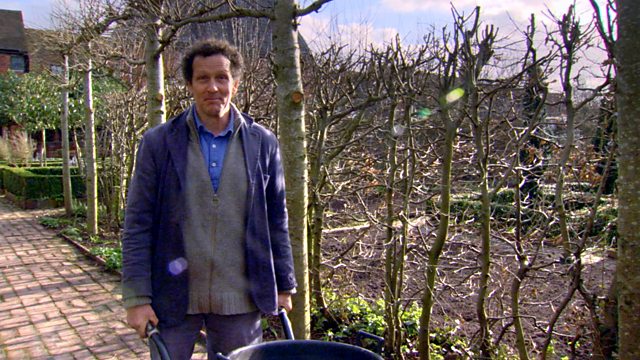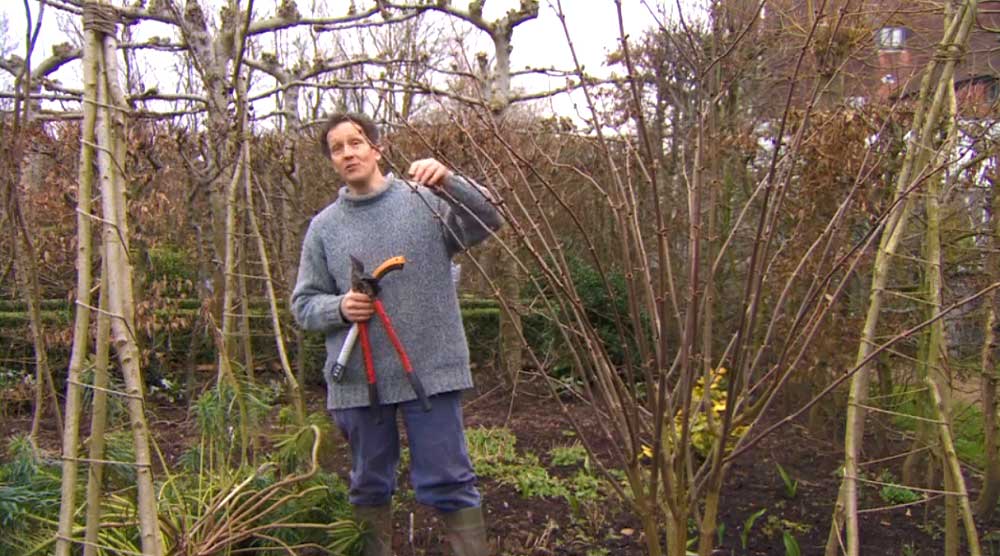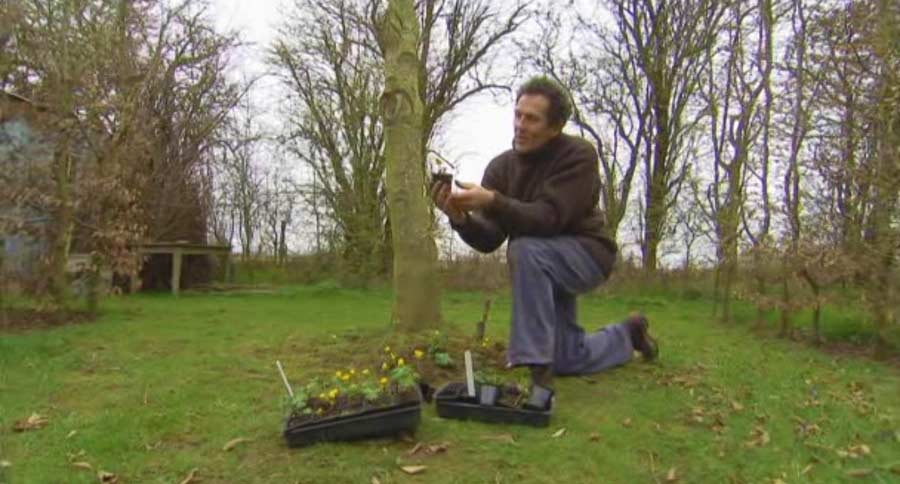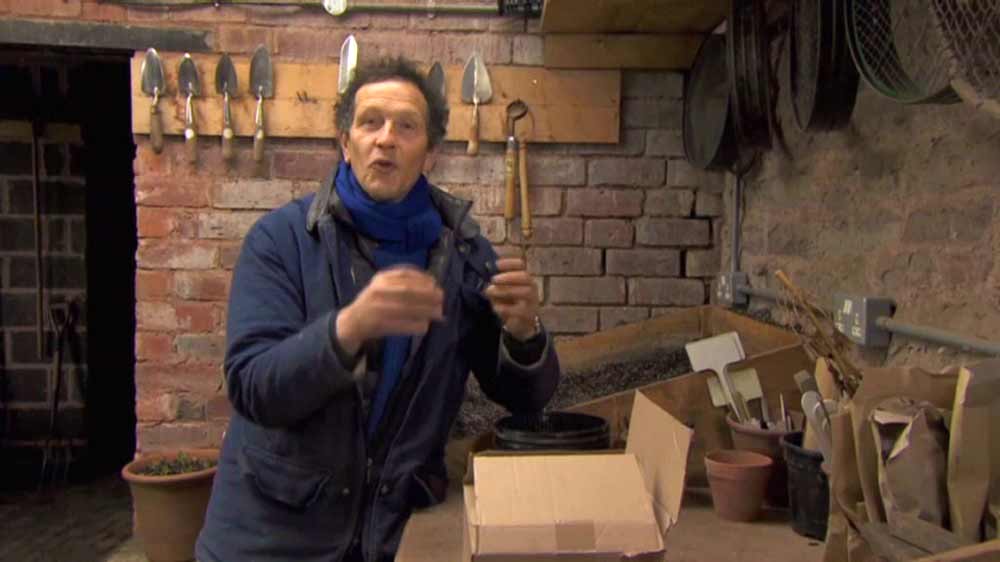Gardeners’ World episode 3 2013: This week on Gardeners’ World, Monty Don shows us how to prepare for spring and summer with timely tasks in his damp garden and soft fruit area. Joe Swift continues his series of master classes on planting design to help us achieve the garden of our dreams. This week he is sharing tips on how to create a tropical green oasis.
Carol Klein is in her Devon garden planting a viburnum that will give spring colour and fill the garden with fragrance. By considering its natural, native habitat, Carol shows how to plant it in the perfect place. We visit a couple that moved to a cottage in Cornwall and used their mastery of flower and foliage colour to turn a thin stretch of land into a beautiful garden.
Back at Longmeadow Monty has advice on the best type of mulch to use for different planting conditions and he gets to grips with pruning his gooseberry and currant bushes.
Gardeners’ World is a long-running BBC Television programme about gardening, first broadcast on 5 January 1968 and still running as of 2019. Its first episode was presented by Ken Burras and came from Oxford Botanical Gardens. The magazine BBC Gardeners’ World is a tie-in to the programme. Most of its episodes have been 30 minutes in length, although there are many specials that last longer. The 2008 and 2009 series used a 60-minute format as did the 2016 series from episode 23, for eight episodes in total.
Gardeners’ World episode 3 2013
Mulching
Mulching involves covering bare soil between plants in order to conserve moisture, by stopping evaporation in sunny weather, and reduce weed growth by smothering weed seeds. Organic mulches such as garden compost and well-rotted manure also improve the structure and fertility of the soil as they break down and become incorporated with it.
Monty advises applying mulch thickly; a layer at least 10cm deep is needed to be effective. Try to avoid burying emerging plants or piling compost up against the stems of woody plants. Monty mulched when his soil was moist and not frozen and that’s ideal for best results.
A wide range of materials are suitable for mulching including garden compost, council green waste, well-rotted manure, mushroom compost and used potting compost. For acid-loving plants such as camellias, it is a good idea to look for composted pine needles, composted bark, leaf mould or bracken, in order to prevent the soil pH from increasing. There are organisations around the country that collect and compost bracken for garden use and many can be found online.
Biodegradable mulches
These break down gradually to release nutrients into the soil and help improve its structure. Layers will need replacing when the material has fully rotted down. Among the best materials are garden compost, wood chippings, processed conifer bark, leaf mould, well rotted manure, straw (for strawberries), spent hops (poisonous if eaten by dogs) and seaweed.
Non-biodegradable
Non-biodegradable mulches do not boost the fertility or structure of the soil, but they do suppress weeds, conserve moisture and some have the added advantage of looking decorative. Slate, shingle, pebbles, gravel, stone chippings and other decorative aggregates are often used as a mulch across beds. Sea shells, tumbled glass and similar materials can be used on the surface of containers, but it is best not to use any materials made from plastic. Dark coloured material will warm the soil in the sun whereas light coloured mulch such as white gravel will reflect sunlight and keep roots cooler in strong sunlight.
Sheet mulches or woven landscape fabric can be used for new beds or borders. After laying, slits can be made in the fabric, allowing direct planting through it. The downside is these mulches do not look very attractive, but they can be camouflaged with gravel, bark or others materials. To allow rain and irrigation water to reach the roots always choose a permeable sheet as a waterproof layer may cause surface runoff and drainage problems elsewhere.
Pot on fuchsias – Gardeners’ World episode 3 2013
Fuchsias, like other tender plants such as salvias and Brugmansia, can be potted on now to give their roots more space in which to develop. Choose a pot about one third bigger than the existing one and partly fill it with fresh compost. Carefully tip the plant out of its existing pot and tease out the roots if they are over crowded. Place in the new pot, surrounded with compost, and water well to settle the soil. You can also prune back these plants now to keep them compact and stimulate fresh growth.
With their profusion of dainty two-tone pendent flowers that last well into autumn, hardy fuchsias bring a tropical touch to borders and containers in warm sheltered spots, in sun or partial shade. Compact and bushy, they can even be grown as informal hedges.
Divide hostas
Hostas are best divided as their buds start to appear above ground but before their leaves unfurl. Lift the entire plants out of the soil and chop the rootball into sections using a sharp spade, ensuring each part has at least one bud. Replant as many sections as you need, spaced about 45cm apart. Firm in and water well.
How to grow hostas
These shade-loving plants are primarily grown for their beautiful foliage. There’s a vast range of cultivars to choose from, with leaves in all shades of green, as well as dusky blues and acid yellows, sometimes variegated or flashed with cream or gold, ruffled, smooth or distinctively ribbed. Many also produce small trumpet-shaped mauve or white flowers in summer. Hostas are notoriously irresistible to slugs and snails, but are also much loved by gardeners, who often amass large collections.
Hostas are one of the best foliage plants. They are easy to-grow-plants and long-lived. There is a wide range of hostas, which vary in leaf shape, size and colour. With a such huge range of leaf shapes, sizes and colours, choosing a hosta is mainly a matter of personal taste. However, it’s also wise to match the plants to the conditions you have in your garden. In general, most thrive in moist soil in light to medium shade. However, blue-leaved hostas flourish in light shade, while yellow-leaved ones prefer some sun.
Miniature types such as ‘Blue Mouse Ears’ or ‘Pandoras Box’ are a good choice if space is tight or for containers. Most also produce clusters of flowers in shades of white, lavender and purple on tall stems.
Prick out seedlings – Gardeners’ World episode 3 2013
Move seedlings out of their seed trays as soon as they develop true leaves. Holding them by their leaves, gently ease seedlings out of their compost and pot them on into small pots where they will have space for their roots to develop. Put in a greenhouse, cold frame or windowsill to grow into strong plantlets that can be hardened off and then planted outside.





Pingback: Gardeners’ World episode 4 2013 — HDclump — Gardeners’ World 2013